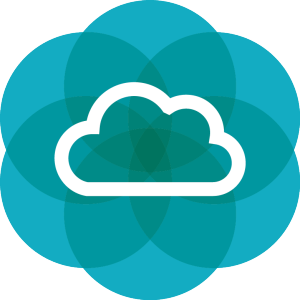 Until now, most of the news coming out of Gluon has been focused on the client aspects of our technology. We now have many people using our Gluon Charm library for building cross-platform Java applications on desktop, mobile, and embedded, all with compelling and modern user interfaces.
Until now, most of the news coming out of Gluon has been focused on the client aspects of our technology. We now have many people using our Gluon Charm library for building cross-platform Java applications on desktop, mobile, and embedded, all with compelling and modern user interfaces.
As was expected, we received a large number of questions from developers that want to store and synchronize data, or that want to integrate their client application with existing back end applications. This is what is dealt with by Gluon Cloud. Gluon Cloud is our other main technical innovation. Its solid foundation is a direct result of our long-time experience in this field. The main features of Gluon Cloud are data synchronization and cloud integration, which we will explain in more detail now.
1. Data Synchronization
Client applications do not live in isolated containers. Almost every application needs to exchange data with a back end or with other devices running the application. A game, for example, benefits from a high score table that is shared by all devices. In a real-time traffic application, a slow-down detected by one user can immediately be synchronized to other users.
Together with the Charm Connect functionality of Gluon Mobile, this is exactly what Gluon Cloud allows developers to do with very little effort. Charm Connect contains the client APIs that create and manage shared data. Depending on the configuration, changes to the data on the client are propagated to Gluon Cloud, and vice versa, changes detected by Gluon Cloud can be propagated back to interested clients. Developers can even instruct Charm Connect to listen for changes in the data and let it automatically synchronize them with Gluon Cloud.
The data synchronization feature provides a massive productivity boost for developers. Rather than retrieving data from a server, changing it, sending it back to the server, and occasionally polling the server for new data, developers can leverage the Charm Connect API, which implements this flow, taking into account different versions and concurrent modifications. Even in case synchronization between clients is not needed, the API is still very useful for backing up your data in Gluon Cloud, allowing developers to switch between storing data locally on the device or remotely in Gluon Cloud.
2. Cloud Integration
Gluon Cloud is not the only cloud on the horizon. We do realize many companies are using existing Cloud providers and back end systems, and they want to use them for their mobile applications as well — which is very smart.
Gluon Cloud contains bridges and hooks that allows it to integrate with third party cloud providers or with existing back end systems. Together with Charm Connect, Gluon Cloud is the perfect bridge for transferring data between desktop, mobile and embedded clients on one hand, and enterprise systems on the other hand. The characteristics of these two worlds are quite different, and it is therefore beneficial to have a bridge in between them. Gluon Cloud knows how clients work. It communicates to clients through Charm Connect, which is a part of the Gluon Mobile library, and which is created specifically for Java clients.
Gluon Cloud itself is a Java Enterprise application, leveraging Java EE 7 API’s. As a consequence, there are a number of techniques available out of the box that allow for a seamless integration with other enterprise applications.
Summary
In general, we recommend using Gluon Cloud for storing and synchronizing data relevant to your mobile clients, and we encourage developers to use the enterprise hooks to connect Gluon Cloud with their existing enterprise systems. If you have to develop a Java Client application and you start with an existing back end, you will find Gluon Cloud to be a helpful product.
